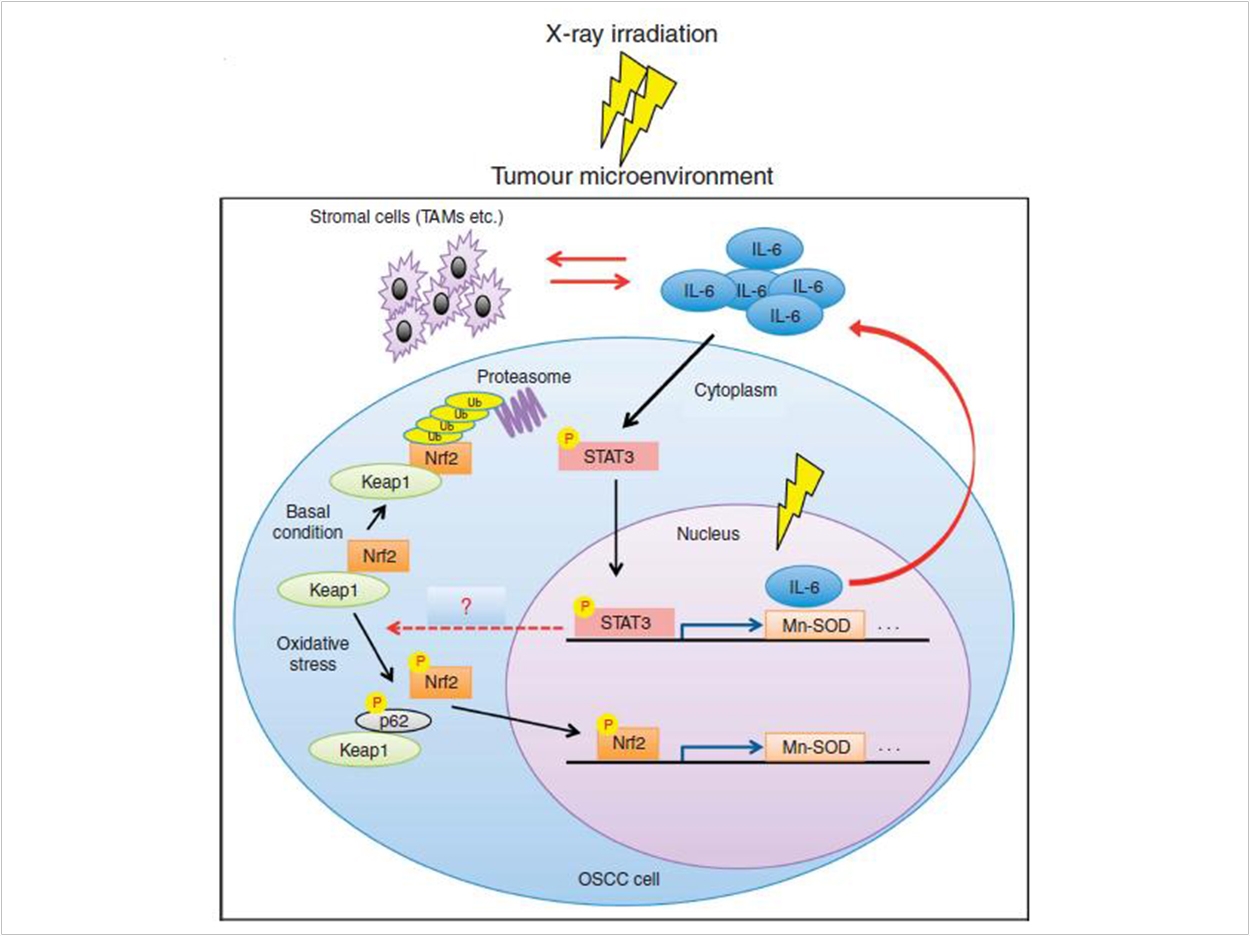
Radiation therapy is effective against many forms of cancer, though some cancer cells can survive this treatment—including oral squamous cell carcinoma (OSCC). Researchers at Kumamoto University in Kumamoto, Japan have been searching for methods to combat resistance to radiotherapy and improve treatment and outcomes.
The researchers are specifically looking for a way to control the biological mechanisms that aid in radioresistance. They examined interleukin-6 (IL-6), a cytokine known for signaling the inflammatory response, and nuclear factor erythroid 2-related factor 2 (Nrf2), which is a protein that protects against oxidative stress.
Multiple in vitro experiments explored a pair of different cancer cell samples. One sample was derived from tissue specimens taken from consenting patients with advanced OSCC who had received 30 grays of total dosage of chemoradiotherapy. The other consisted of human OSCC cell lines irradiated with doses of 6 or 10 grays obtained from the Japanese Collection of Research Bioresources Cell Bank in Osaka, Japan.
The results showed that IL-6 protects cancer cells from radiation therapy through interaction with the Nrf2-antioxidant pathway. When OSCC cells are exposed to x-ray radiation, IL-6 levels increase and activate the Nrf2-antioxidant pathway. This leads to the production of antioxidants, such as manganese-dependent superoxide dismutase and IL-6, inside the nucleus and higher cancer cell radioresistance.
“This interaction and the resulting protection from oxidative damage that we have discovered here is very interesting,” said Hideki Nakayama, DDS, one of the research group leaders. “As far as we know, we are the first to discover that IL-6 has such an effect on the Nrf2-antioxidant pathway. We hope new therapies that target IL-6 will give us an advantage over many types of radiation-resistant cancers.”
Most of the experiments were performed in vitro, which is a limitation of the study. But research from the same group has already shown in a mouse model that the immunosuppressive drug tocilizumab, currently used for rheumatoid arthritis, is effective against IL-6R as a treatment for OSCC. Future research will attempt to expand work on reducing cancer’s radiation resistance.
The study, “IL-6 Controls Resistance to Radiation by Suppressing Oxidative Stress Via the Nrf2-Antioxidant Pathway in Oral Squamous Cell Carcinoma,” was published by the British Journal of Cancer.
Related Articles
Cytokines May Tie Obesity to Periodontal Disease
Acai Berries May Inhibit Bone Loss
HPV-Positive Cancer Patients Need Less Chemo and Radiation












